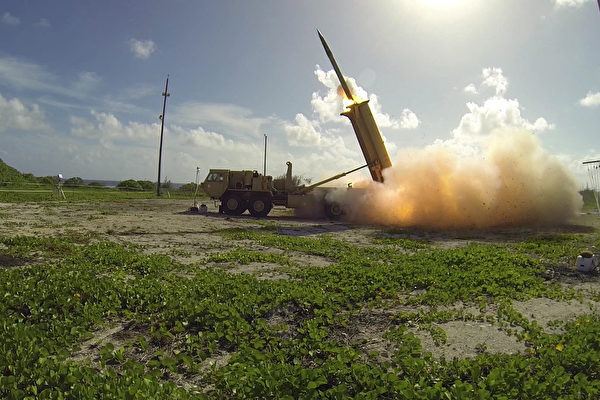Amid escalating tensions in the Middle East, the United States announced on Sunday (October 13) that it will provide the Terminal High-Altitude Area Defense (THAAD) system to Israel. This is one of the most powerful anti-missile weapons in the U.S. military’s arsenal. Military experts believe that THAAD will add another layer of defense for Israel. So, how powerful is this system exactly?
THAAD, short for Terminal High-Altitude Area Defense, is an advanced ground-to-air missile interception system. It combines advanced radar systems and interceptors, making it an efficient defense system that has been proven effective in combat scenarios, capable of countering threats from short, medium, and intermediate-range ballistic missiles.
In January 2022, the United Arab Emirates successfully intercepted missiles fired by Houthi rebels using a THAAD system they had purchased.
The THAAD defense system is capable of intercepting ballistic missiles with a range of 150 to 200 kilometers (93 to 124 miles), with a nearly perfect success rate in tests.
According to CNN, information from the Missile Defense Project of the Center for Strategic and International Studies indicates that the production model of the THAAD system has never failed in intercept tests against incoming targets.
The precision of this defense system can be attributed to the radar system (AN/TPY-2 radar) used to provide information on incoming targets.
The radar system can detect missiles in two modes. In the forward-based mode, it can capture and track targets within a range of up to 3,000 kilometers (1,865 miles); in the terminal mode, it can look upward to capture targets as they descend.
Israel is approximately 1,700 kilometers (1,100 miles) away from its biggest adversary, Iran, placing any missile launched from Iran within the coverage range of the THAAD radar system.
THAAD is the only U.S. missile defense system capable of intercepting targets in both the exoatmospheric and endoatmospheric layers. The defended area covered by THAAD is larger than that of the Patriot system.
The THAAD system’s missile is 6.17 meters long, with a maximum diameter of 0.37 meters and a launch weight of 900 kilograms. It can reach speeds of up to 2,500 meters per second, composed of boosters, kinetic interceptors, and a shroud. In the terminal phase, it uses infrared imaging guidance to identify, lock on, and directly collide with and destroy the warhead of a ballistic missile.
Through extensive command and control systems, the THAAD system can communicate with a range of U.S. missile defense systems, including the Aegis systems commonly found on U.S. Navy vessels and the Patriot missile defense system used for intercepting short-range targets.
According to a report from the Congressional Research Service, the U.S. military possesses seven sets of THAAD systems, with each system consisting of six vehicle-mounted launchers, each equipped with eight interceptors. They also have a powerful radar system, a fire control system, and communication components.
The number of other U.S. missile defense systems exceeds that of the THAAD system, underscoring the importance the Biden administration places on deploying THAAD in Israel.
Israel’s current defense systems mainly consist of three layers: the Iron Dome system, David’s Sling, and the Arrow system. These systems have played a significant role in defending Israel against attacks from Hamas, Hezbollah, and Iran.
Amid the security challenges Israel faces, the U.S. Department of Defense announced on Sunday the deployment of the THAAD system to Israel to enhance its comprehensive air defense system.
A single THAAD system typically requires about 100 soldiers to operate. The deployment of the THAAD system signifies the U.S. sending ground forces to Israel, marking a significant step in directly protecting Israel from enemy attacks.
The Pentagon stated that it will dispatch 100 U.S. soldiers to operate the system in Israel.
CNN military analyst and former U.S. Air Force Colonel Cedric Leighton mentioned that the deployment of the THAAD system in Israel holds great significance as it provides an additional layer of defense, further deterring adversaries’ attacks.
Leighton highlighted that once the THAAD system is in place, it effectively adds another defensive layer to Israel’s existing air and missile defense systems.
Elsewhere, the deployment of THAAD receives close attention from America’s competitors, especially China. China vehemently opposed the deployment of the THAAD system in South Korea by the U.S. Experts believe that Beijing is concerned that the powerful THAAD radar system may be used to monitor activities within China.
The U.S. has also deployed THAAD anti-missile systems in Guam to protect key U.S. military bases on the Pacific island from potential ballistic missile threats posed by China and North Korea.

